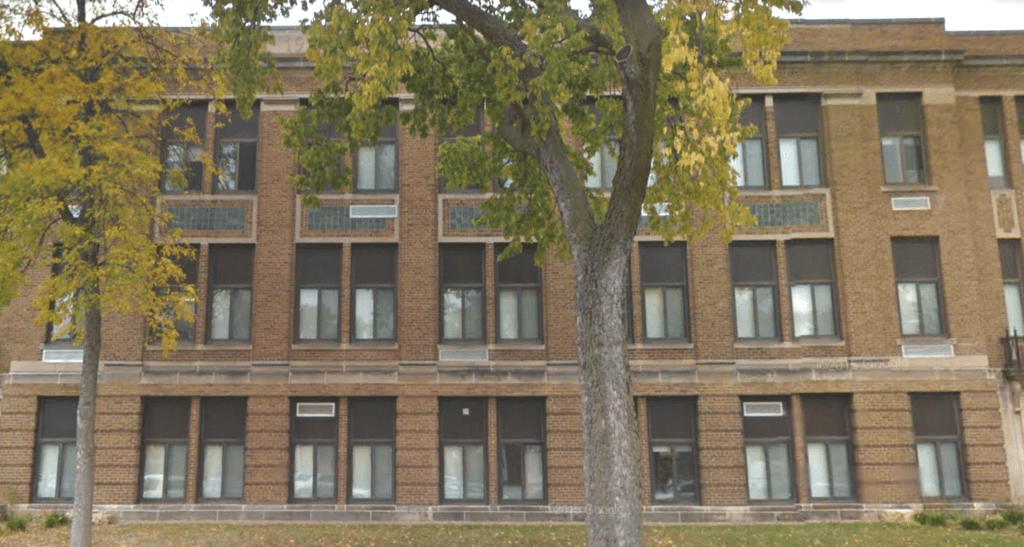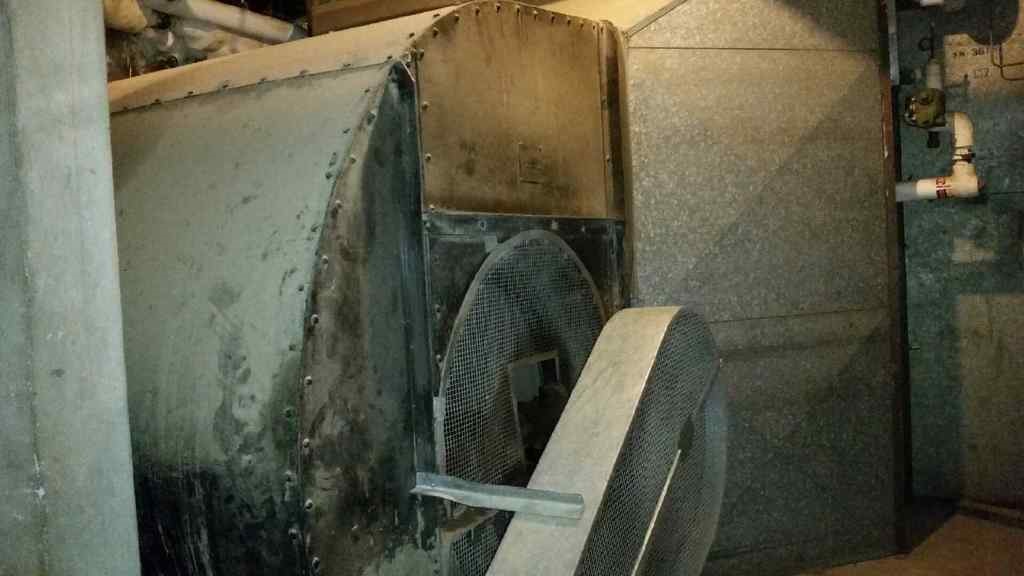
This post is the main course following last week’s appetizer that covered some complexities of deep energy retrofits for homes. The thrust of that post was that even retrofitting homes requires considerations of many things that have nothing to do with energy – just to achieve desired energy results. This week, we are advancing the subject to commercial buildings.


Case Study: 100 Year Old School
Let’s start again with a 100-year-old middle school shown nearby. This building has already had a deep energy retrofit, and I’ll explain how to tell later (below).
I pulled this building out of my memory banks, and dug up my old report – one I did at this facility 20 years ago. The feasibility study I completed did not include an HVAC replacement.
This building is typical of hundreds, if not thousands, of similar buildings across the upper Midwest. It originally featured one huge air handler in the basement, typically buried in the middle with no consideration for ever needing replacement. But then, everything, including the boilers, building, air handler, cast iron radiators, and the ductwork, would stand the test of time alongside the ancient Egyptian pyramids.
The air handler would look like the image[1] to the left. The white pipe in the upper right feeds a cast-iron steam coil that wouldn’t stop a thrown cat. A line diagram of this system is provided to the right. The fan pushes air into and pulls it out of the classrooms and other occupied spaces. At the same time, it pulls outdoor air in from the roof. The volume of fresh air pulled in is pushed through toilet exhaust and other openings.
Cooling was provided with operable windows as shown on the façade image above. The large original windows in this building have been replaced with the usual hideous sandwiched insulation board and smaller windows.
The telltale that this building has been retrofitted is we can see there are holes chopped in the walls with louvers to bring in fresh air. They are asymmetrically located[2] – another obvious tipoff this is a modern retrofit. The beautiful air handler has been shut down, and the building has probably been converted to water source heat pumps, which are drawing fresh air through the walls. Now they have heating, cooling, and ventilation.
Considerations for Retrofitting Old Buildings
There are infinite considerations for retrofitting an existing building with new HVAC and controls. I will cover a few of them.

Reuse?
What might the design engineer and contractor be able to reuse from the existing system or equipment? In the above case, it would be difficult to reuse anything. The chases for fresh air are made of brick, and they are huge. They run from roof to basement, and there is no isolation. It would cost a fortune to comply with modern fire codes.
It would also be nearly impossible to reuse steam piping for the circulating water loop that feeds the heat pumps or any other source of HVAC. Why? Because a “gallon” of steam (condensate) carries about 9,000 Btu of heat, while a gallon of hot water might only carry a few hundred Btu. Therefore, the pipe sizes would be vastly inadequate. Moreover, the condensate piping that returns condensed steam (water) to the boiler has never been tested for pressure. Once it is pressurized after conversion to a hot water system, it may spring leaks like a milk carton canoe.
Ventilation
Ventilation is always a challenge for big retrofits. The case study above is a clear demonstration of this. Chop holes in a thick brick wall? Yikes! Expensive, not to mention unsightly. In our 100-year old office building, we had no partitions (interior walls), so it was easy to install one system per floor in a building of the same era as the one shown above.
In some single or two story buildings, designers may be able to chop just a couple holes in the roof and feed fresh air down the corridor ceiling space. This is likely less expensive, less invasive, and less unsightly than going through walls.
Comfort
Old buildings have huge heat sources in each space to offset heat loss through big windows and uninsulated walls. Does a heat pump stand a chance? Maybe not without new windows and some insulation. Just as standing near a fire roasts the side of your face, a cold wall will suck the heat out of your face, making you cold.
NOTHING Like New Construction
The bottom line is achieving efficiency with HVAC system replacements in commercial buildings could not be less like achieving efficiency in new buildings. The engineer developing the plan has to possess a triad of energy expertise, design expertise, and creativity.
- Ventilation
- Heat sources and sinks
- Comfort
- Energy efficiency
- Fire codes
- Physical space
- Load bearing capacity for added equipment
- Et cetera
Choosing HVAC options for retrofits versus new construction is not like apples to oranges or any other fruit, vegetable, or grain. It is more like apples to poutine.

[1] This stuff is very hard to find on the internet. You’re welcome.
[2] Most likely to save money.
